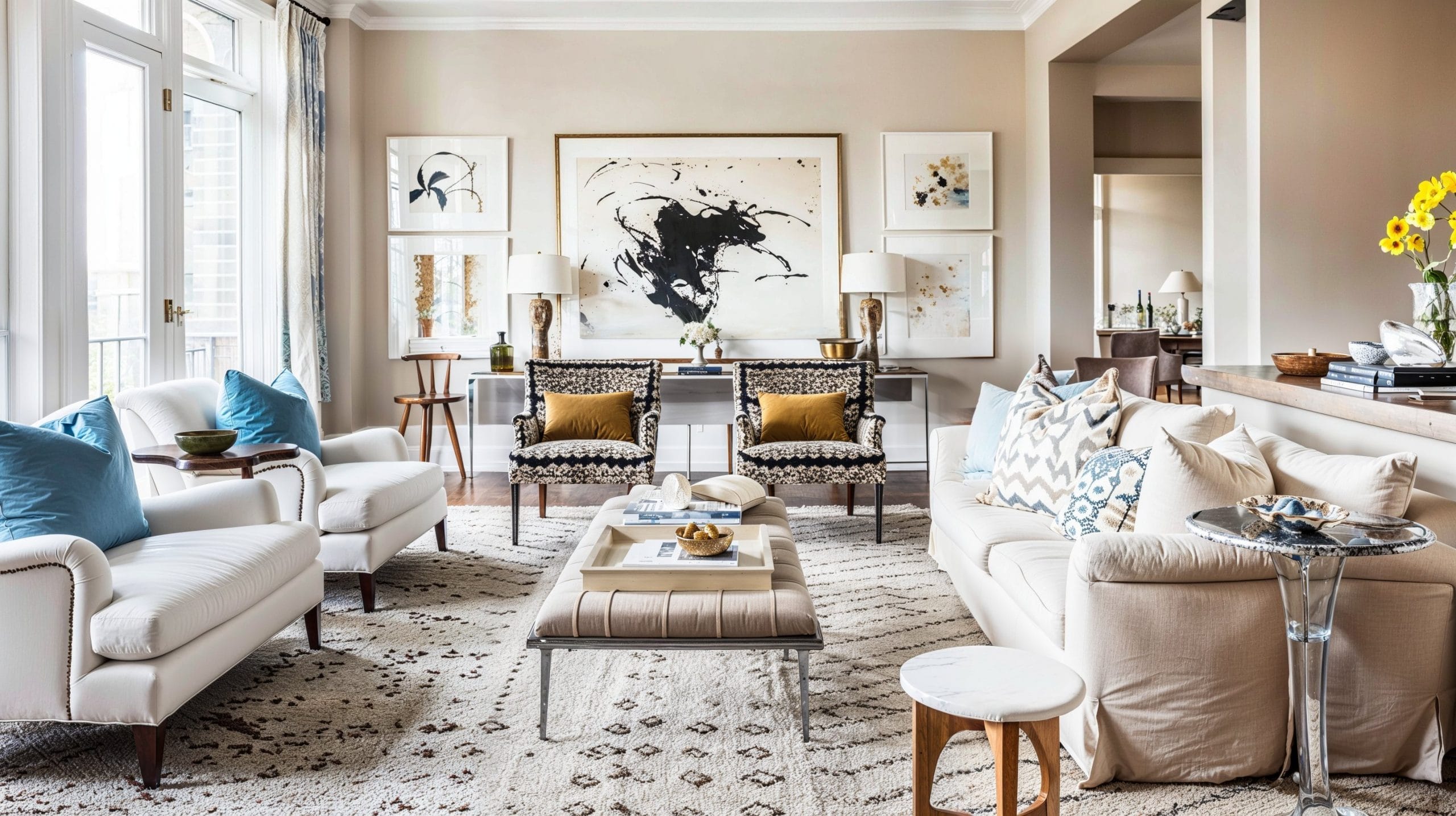Explore expert miami interior design for high-end home and office interiors.
Explore expert miami interior design for high-end home and office interiors.
Blog Article
Transform Your Home With Vital Concepts of Inside Style and Appearances
By understanding the effect of color theory and the importance of texture and patterns, one can produce spaces that are not only visually enticing however also deeply individual. Achieving this balance involves more than mere decor; it includes a strategic plan and a keen understanding of just how each aspect interacts within a room.
Understanding Shade Concept
Recognizing the principles of color theory enables developers to create areas that reverberate psychologically with residents while satisfying functional demands. Each group plays an essential function in developing consistency within an area.
The emotional impact of colors is profound; warm colors such as reds and oranges stimulate energy and warmth, while trendy tones like blues and greens promote calmness and serenity. The usage of corresponding shades boosts aesthetic passion, creating striking contrasts that can elevate a room's appeal.
Neutral colors, on the other hand, function as a flexible backdrop, allowing various other style components to beam. It is vital to consider factors such as lighting and the room's purpose when picking a shade scheme, as these can modify the assumption of shades throughout the day.
Eventually, a well-considered color pattern can change a room, cultivating a feeling of comfort and style that aligns with the occupants' choices. Mastery of color concept is, consequently, an essential ability for any kind of indoor designer aiming to develop unified and inviting settings.
Attaining Balance in Design
How can developers accomplish a feeling of balance in their rooms? Accomplishing balance in style is fundamental to producing unified interiors.
Unbalanced balance, on the other hand, counts on varying components that still attain a natural look. This method allows for even more dynamic and informal arrangements, offering interest while keeping equilibrium. By meticulously choosing differing sizes, shades, and structures, developers can produce a visually engaging area that really feels balanced yet energised.
Radial equilibrium emphasizes a main focal point with aspects radiating external. This design is typically seen in round layouts, where furnishings and design create a natural surround that attracts the eye inward.
Inevitably, achieving balance requires thoughtful factor to consider of range, percentage, and the relationships in between components. interior design firms. By masterfully applying these equilibrium principles, developers can transform areas right into settings that really feel both cosmetically pleasing and functionally harmonious, enhancing the general experience for passengers
Relevance of Spatial Awareness

A keen feeling of spatial understanding allows developers to identify focal points within a space, assisting the audience's interest to essential features while keeping a general feeling of unity. It additionally helps in the tactical placement of lights, which can substantially influence the perception of space and mood. Recognizing spatial connections allows the developer to provide to the certain demands of residents, making certain that each location serves its designated function without endangering looks.
Inevitably, spatial recognition is important for maximizing the potential of any indoor area. By thoroughly considering the interaction in between dimensions, design, and function, designers can produce atmospheres that not only meet functional demands but also stimulate a sense of comfort and appeal, enhancing the general living experience.
Including Texture and Patterns
Accepting a varied variety of textures and patterns can substantially improve the aesthetic and responsive appeal of an indoor space. The calculated use of different materials-- such as wood, metal, fabric, and stone-- creates deepness and rate of interest, making a room feel much more welcoming and vibrant. As an example, integrating smooth surface areas with rough structures can establish an equilibrium that draws the eye and involves the senses.
When integrating patterns, take into consideration both range and repetition. Huge patterns can work as centerpieces, while smaller, refined styles can complement other elements without frustrating the area. Layering patterns, such as pairing floral pillows with striped tosses, includes intricacy and a feeling of harmony if implemented thoughtfully.
It is also crucial to keep a natural shade palette, making certain that textures and patterns function together as opposed to compete for focus. By choosing a couple of key structures and patterns, you can produce a combined aesthetic that mirrors your individual style while enhancing the overall ambiance of the area. Eventually, the careful consolidation of these components can change an ordinary space into an innovative setting rich with personality and warmth.
Personalizing Your Space
Producing an area that shows your character is important to accomplishing a really welcoming environment. Personalization in interior decoration allows you to instill your special design and rate of interests into your home, transforming it from a plain shelter into a refuge that speaks to that you are. Begin by choosing a shade combination that reverberates with your emotions-- bold shades can energize, while soft tones offer peace.
Incorporate art work and decoration other that mirror your passions, whether it be traveling, nature, or abstract concepts. Showing personal collections, such as publications, photographs, or keepsakes, can stimulate valued memories and develop prime focus within a room. In addition, consider personalizing practical items, like upholstered furnishings, to align with your aesthetic choices.

Conclusion
In verdict, the makeover of a home through the necessary principles of interior layout and aesthetic appeal requires a comprehensive understanding like it of shade theory, balance, spatial awareness, structure, and personalization. Each aspect contributes significantly to producing an unified and useful living atmosphere - Architecture Firm. By attentively integrating these concepts, people can improve the visual appeal and emotional resonance of their spaces, inevitably fostering a home that mirrors distinct identities while giving convenience and functionality
Report this page